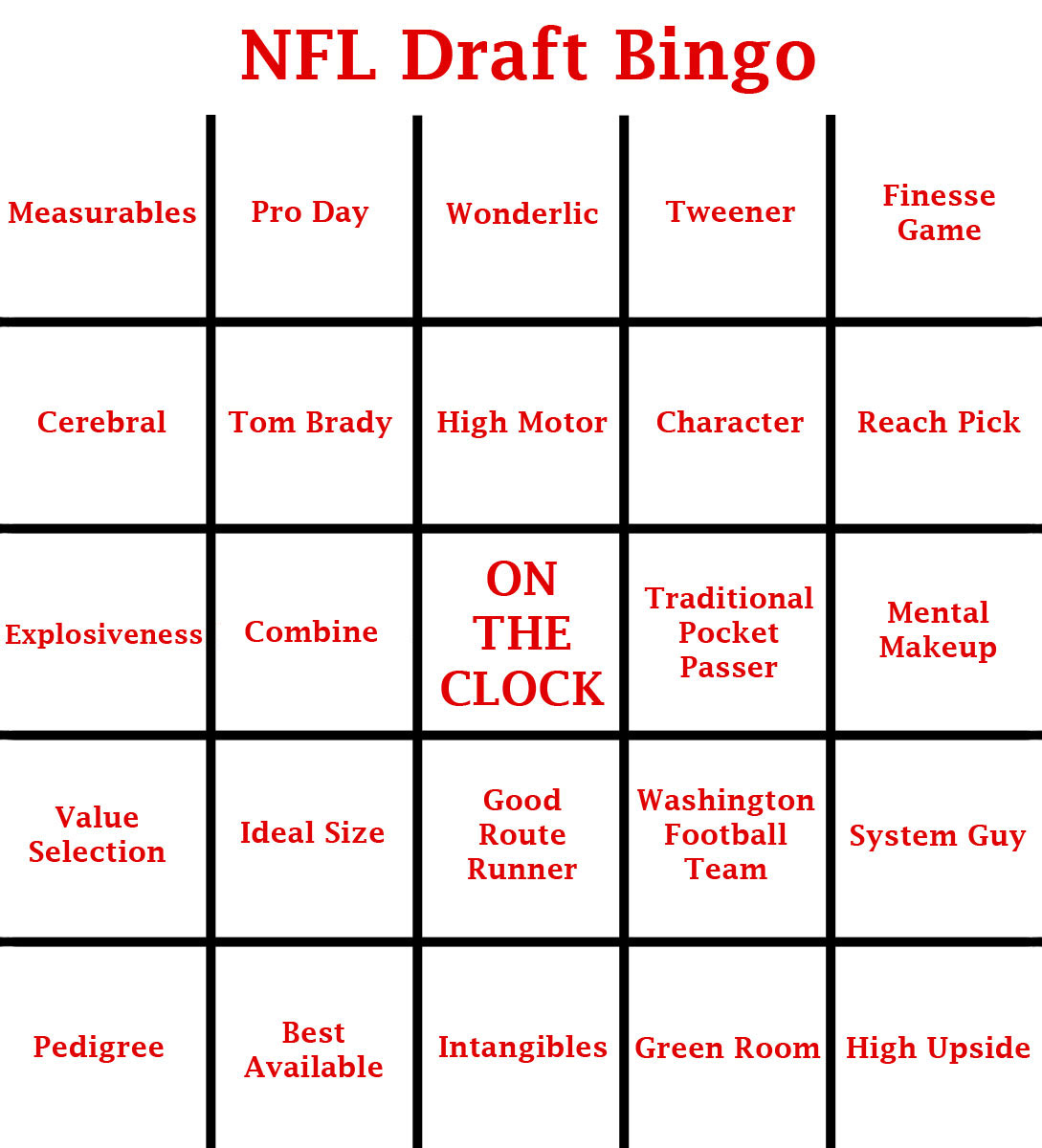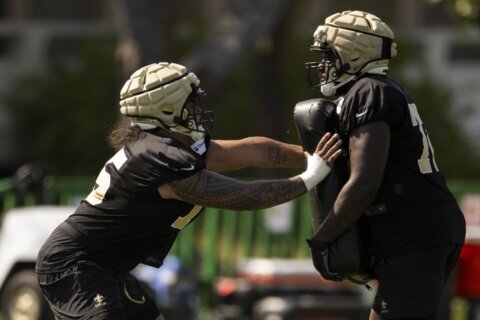WASHINGTON — As it has continued to grow in stature, hype and duration, the NFL Draft has taken on a life of its own as a sporting event.
The process is touted and advertised for weeks in advance, with supposed experts positing their views of the prospective draftees’ values rising and falling for any number of reasons. Then, finally, when all the mock drafts and predictions have been made, the seven-round event itself stretches out over three days, the same amount of time it takes Major League Baseball to complete all 40 rounds of its own selection process.
It’s perfect that Bud Light sponsors the event, because in essence, the NFL Draft is the Bud Light of American sports. Nobody really likes the Draft, but everybody consumes it on some level. It’s bland an inoffensive, yet somehow incredibly popular. Sure, it’s technically sports, even if it doesn’t really feel, smell, or taste like it. It’s almost embarrassingly popular.
And hey, the first round is fun. Not fun enough to make a movie about it, but, well. There’s always some sort of spectacle, like last year’s how-far-will-Johnny-Manziel-fall show taking center stage.
But after all the round one fanfare, what reason is there, really, to watch the final two days of coverage (which includes four-and-a-half hours Friday night and a solid seven hours Saturday) when you could just check your team’s results on your phone, or even in the paper the following morning? Why does all that coverage even exist?
The answer has less to do with value for the viewer, and more to do with the cost ESPN has already allocated to its football coverage. In 2006, ABC moved one of its longest-running and most successful programs – Monday Night Football – to ESPN, fully investing in its sports-centric network (both channels reside under the Disney umbrella). The current eight-year broadcasting rights deal is valued at $15.2 billion.
The same year, in 2006, NFL Network began producing its own coverage of the draft, and a television arms race ensued. In 2010, the NFL and ESPN went all-in, breaking the proceedings out over three days. The gamble worked.
ESPN drew a 5.47 rating in 2010, up 30 percent from a year prior. By 2013, the draft’s opening night averaged 6.2 million viewers on ESPN, with NFL Network drawing an additional 1.5 million. Last year, first round draft coverage netted a combined viewership of 32 million viewers.
But, again, past the first round, what’s in it for the viewer? For 11.5 hours, you’ll mostly get a lot of middle-aged men, some former coaches or players, some not, sitting around a table using words (and non-words) like “measurables,” “motor” and “cerebral,” many of which have no defined value, to project the future success of the players coming off the board.
There will be no actual football. With most of the remaining eligible players known only to their family, friends and hardcore college football fans, the whole proceeding can be quite uninspiring to the average viewer.
Seriously, both the Caps and Wizards have advanced in the playoffs for the first time ever. There are much better, actual sporting events to watch this weekend. Go do that.
However, if you insist on plopping down on the couch or saddling up to the bar to find out who your team drafts this year the moment it does so, we’ve created a handy Bingo card full of likely buzz terms to keep you entertained through the slow moments. See below for a quick explanation of each term and why we’ve included it on this year’s list. Good luck!

Measurables: Skills that can, somehow, be measured.
Pro Day: Workouts held prior to the draft at colleges.
Wonderlic: A test administered specifically to quarterbacks, intended to judge their decision-making ability.
Tweener: A player who doesn’t fit the “ideal size” for his position and may have to learn a new position in the NFL.
Finesse Game: A quiet slight towards players perceived as soft.
Cerebral: A dumb person’s smart term for intelligence.
High Motor: The football equivalent of “hustle” from baseball.
Tom Brady: Every year, analysts will remind the viewer that Tom Brady wasn’t drafted until the sixth round. Literally every person still watching will already know this.
Character: Off-the-field behavior. See: Jameis Winston.
Reach Pick: A player the analysts believe to be drafted above his value.
Explosiveness: Quickness off the line of scrimmage.
Combine: The NFL workout day for potential draftees.
On the clock: Team that is next to pick.
Traditional Pocket Passer: A non-mobile quarterback who fits the prototype of signal callers from the past few decades.
Mental Makeup: Generic term for intelligence.
Value Selection: A player the analysts believe to be drafted below his value.
Ideal Size: The prescribed height for a certain position, according to the experts.
Good Route Runner: A wide receiver who puts himself in the precise spot the quarterback expects him, based on the play design.
Washington Football Team: The alternative term used as part of the ongoing protest against the name of the Washington football club. Check this box if any analyst refuses to use the nickname “Redskins.”
System Guy: A player the analysts believe has shown the ability to play within a certain offensive or defensive scheme.
Pedigree: Genealogical lineage to former athletes.
Intangibles: Everything else.
Green Room: Area backstage completely unnecessary for an event like the NFL Draft.
High Upside: Perceived potential for improvement.






